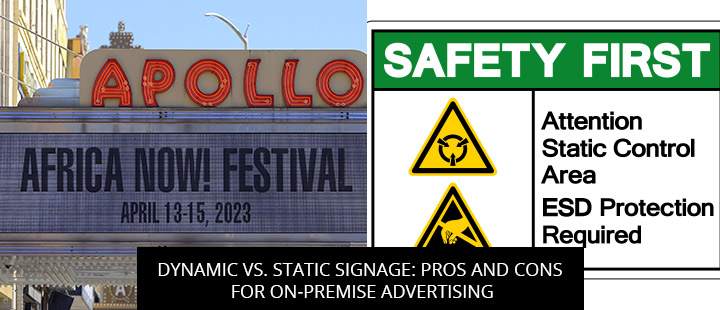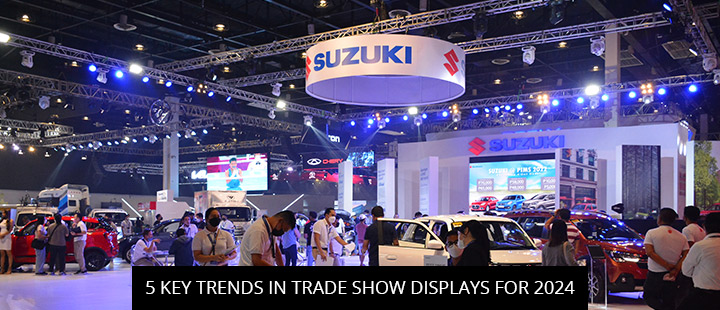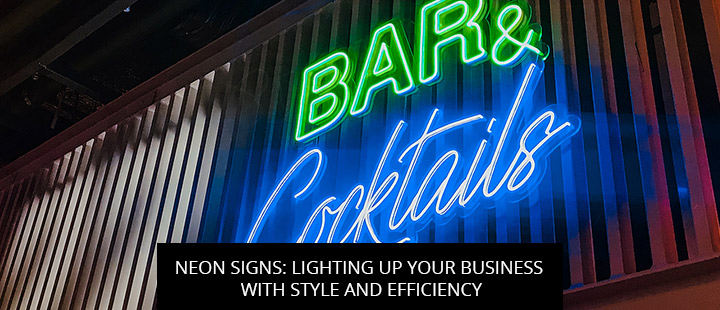Advertising is a powerful tool for businesses, as it helps to spread the word about products and services, build brand recognition, and generate more sales. With the rise of technology and digital advertising, many businesses are now turning to on-premise signage to reach potential customers. On-premise signage includes both static and dynamic signage, and each has its own unique advantages and disadvantages. At Signworld Business Partners, our team can help you decide what would be best for your business. Read on as we discuss the pros and cons of dynamic vs. static signage for on-premise advertising.
Static Signage
- This type of sign is typically less expensive than dynamic signage, and it can be used for a variety of purposes. One of the primary benefits of static signage is that it is more cost-effective and easier to install than dynamic signage. Additionally, static signage is more durable and better suited for outdoor environments, as it is not affected by weather conditions or other environmental factors. Furthermore, static signage does not require any ongoing maintenance or updates, which can help to reduce operational costs.
- One of the primary disadvantages of static signage is that it cannot be easily modified or updated. If you need to make changes to your on-premise signage, you will need to replace it with a new sign. Additionally, static signage can quickly become outdated and unappealing to customers, as people may become accustomed to seeing the same message repeatedly.
Dynamic Signage
- This signage offers more flexibility and can be easily modified and updated. With dynamic signage, you can quickly change out content and promote new products or services. Additionally, dynamic signage is more visually appealing and can draw more attention than static signage.
- However, dynamic signage is typically more expensive than static signage, and it may require ongoing maintenance and updates.
When deciding whether static or dynamic signage is right for your on-premise advertising, it is important to consider your budget, the type of message you want to communicate, and the amount of maintenance and updates you are willing to commit to. Static signage is typically more cost-effective, and it can be used for a variety of purposes. However, dynamic signage offers more flexibility and can be easily modified and updated, making it a great choice for businesses that need to frequently update their on-premise signage. Contact us today to know which signage you should consider for your business.




